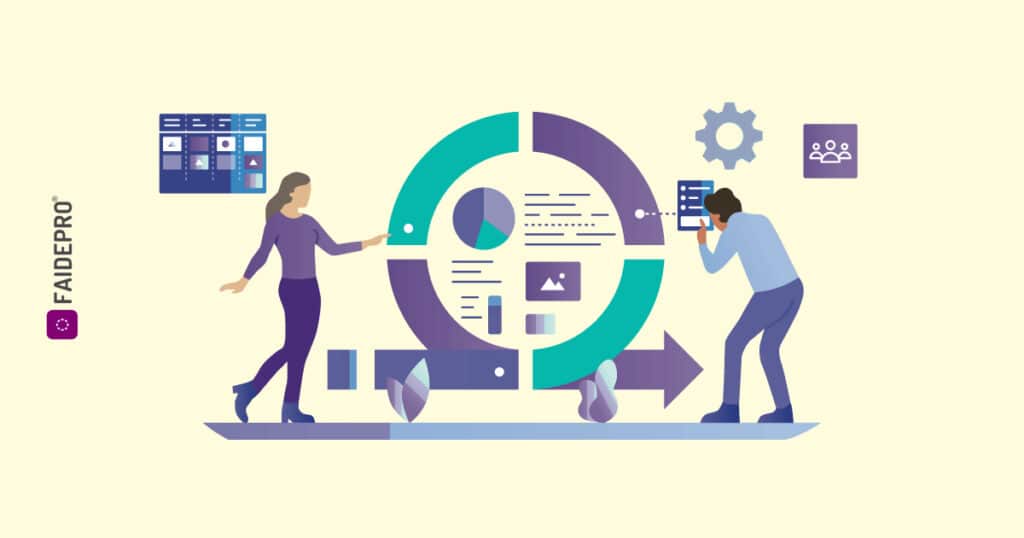What is Agile Testing?

In the common language, we can state “Agile Testing” is testing that is mainly dependent on the development basis.
It is a process where an intermix of developers, coders, and testers work simultaneously to deliver products that are optimized as per the preferences and expectations of the purchasers. Because of this we mainly use the principles like SBE in use.
Conventional Waterfall development allowed for testing once the event process was entirely over. The precision in identifying bugs and snags was sometimes compromised to stay up with the merchandise timeline. Also, absorbing these changes required the merchandise to be reverted to the event team. On the contrary, in Agile testing, testers leverage and supply comprehensive insights into behavioral patterns, which help in ad-hoc modification of the merchandise.
The companies that are the foremost successful in embracing agile software development understand that agile isn’t something that companies do; instead, agile are some things that companies become. Sometimes it takes a very long time to become consistent but the time you spend is always worthy. Organizations across various sectors, from healthcare to banking, from the general public sector to media, are actualizing the immense value that agile software development brings: better quality products, faster time-to-market, and higher-quality decision making.
Much has been written about agile mobile app development companies, their tools and methodologies, the advantages of cross-functional teams and short iterations, and therefore the culture necessary to enable success. However, it’s essential to believe in the elemental characteristics of agile development and the way they apply to the execution of practical software development projects.
Various Data and IT features are:

Fixed-Length Sprints
Sprints and releases are the two main key points of the agile software development methodology that various Data and IT service industries use.
A release contains several sprints, each of which is actually a little project alone.
A feature like maintenance and all other requests are all well organized, estimated as there is always a sprint before assigning a release.
The stable delivery of the latest, working and tested features at the close of every sprint supplies the feedback that permits the merchandise team to stay the project and system on target. Questions such as below can be easily answered with the help of (time-boxed) or fixed-length sprints this is very effective for the questions like:
How much work did the team accomplish during the last sprint compared to the anticipated amount?
How many features are feasible to finish before this sprint’s deadline?
The core advantage of fixed sprints is that the whole team remains focused on a couple of prioritized goals, instead of attempting to know every single detail of the system. With highly visible results (both positive and negative) available from each previous sprint, the team can get the foremost out of the build-measure-learn process and identify areas to refine the process for the next sprint. Teams are more likely to prioritize features properly and fewer likely to fall victim to scope creep. Each team member helps one another stay focused on delivering the very best possible business value per unit of delivery.
Sprints Always Deliver Working Software
Delivering tested, accepted, and dealing product features at the top of each sprint are an agile software development team’s first measure of progress. Working features allow teams to enhance collaboration, increase project visibility, and answer customer feedback strategically. Working software provides concrete evidence that the project is on target.
Throughout the primary few sprints of a replacement project, the team might not deliver an outsized number of features. Still, because the project progresses, the team typically finds a predictable delivery cadence. As the world is moving towards the developing phase we have to improve the UX and UI design of the app, architecture, and business.
At every stage of the project, the team works to merge the newest input from customers, users, and other stakeholders to reach the foremost valuable business solution. Sprint by sprint, everyone involved can see whether the project is getting to meet the foremost valuable business goals accurately.
Value Is A Priority
Most of the agile software development continuously serves the value of the business early and this is very consistent in terms of business and working software. For this reason, product features are the central unit of designing, tracking, and delivery. From sprint to sprint, the merchandise team measures the amount of functional and tested features with each release.
Mainly the features of the software should be only important to the service provider.
This approach to software development, in turn, requires that every feature is little enough to release during a single sprint. Feature prioritization is important for reaching the goals of every sprint, also for delivering business value.
Continuous Testing
There is nothing riskier than postponing all testing until the top of a project.
By the use of the various testing, different departments and teams measure the working, progress, and defects that the software possessed.
This approach to testing dramatically reduces the danger of failure late during a project. Many waterfall projects collapse once they uncover, in an incessantly late project’s test-and-fix phase, that the architecture is terminally flawed, or particular components of the system can’t be integrated, or features are unusable and entirely useless. All of those defects are discovered too late to form changes. By practicing continuous testing, product teams can avoid both the danger that these problems will happen and therefore the constant apprehension of the worst possible outcome.
Continuous Improvement
In agile software development, product teams continuously refine both the system and therefore the project.
Various plans of the project can be varied according to the project report of the teams and departments that are doing their work in the background of the sprint retrospectives, like running and testing of the various software.
The continuous improvement aspect of agile software delivery becomes particularly important at the close of serious milestones within a project.
It’s essential to stay finding ways to adapt the method and to continue delivering the maximum amount of value as possible per unit of your time to the customer, the team, and therefore the organization. Agile software development methodologies always mature and evolve sort of an animate thing.
Actualizing Success In Agile Software Development

There can be many different practices or methodologies that various software companies provide as software development services for the testing of the software but there are very few characteristics that are needed everywhere for the success of the agile software development process.
Fundamentally, actualizing success from agile software development is thru early and frequent iterations. From sprint to sprint, the merchandise team uses continuous getting to define and redefine the scope of the discharge plan as new information presents itself and requirements change. The sprint plans become more likely to deliver successful mobile products.
Agile Testing Values

The four main values related to it can be considered as the main reason for the “Agile” testing.
These values act as an inner spirit for management in developing software. Let’s have a closer look at these values.
1) Individual and Interactions Over Processes and Tools
The facts that are needed in processing and the tools are very important aspects for the event processing which requires no corroboration.
However, it’s the relevant people and therefore the communications that spearhead the method by leveraging these tools within the absolute best manner.
2) Customer Collaboration Over Contract Negotiation
User interaction is ironed out at the guts of Agile testing. Regular interactions with customers within the sort of periodic demos and questionnaire sessions make sure that the event is aligned with the requirements of the customer. In the Waterfall method, customers want to negotiate the merchandise requirements before starting the event and weren’t included throughout the method.
3) Responding to vary Over Following a Plan
While planning equips testers with a technique to succeed in the goal, it limits the power to reply to changes that come along. On the other hand, the testing of agile is considered by accepting the changes that are happening around the world and then fastly optimizing and maintaining the product as per the required circumstances.
Agile Testing Advantages

This testing has made the development of the software the easiest and the enjoyable and funny process.
A basic grasp of fundamentals of Agile testing by testers including the striking pace of project completion helps business enterprises within the following ways:
Comprehensive Testing
The group of Agile testers during a project is involved from the start until the top. Working with developers in tandem, they facilitate reviews on each feature of the merchandise alongside streamlining a coordinated approach. They also help developers by presenting them with various scenarios so that coding is often improved.
Improved Quality
While testers are entrusted with the responsibility of completing tests associated with functions, integrations, and regressions, developers perform automated unit tests to repair basic bugs at the first stage. This acts as two-step verification and enhances the general product quality.
Easy Accommodation of Changes
Conventional Waterfall testing requires the merchandise to revisit the event stage to think about changes within the product dynamics that appear at a later stage. Ultimately, the prices involved doping up, affecting the general financial particulars. Instead, in Agile Testing, these changes are often easily conveyed by testers to the developers and maybe incorporated just in time.
Better Communication
Since all the workers related to the event and testing add conjunction, tons of your time is saved. Earlier, the merchandise want to undergo two separate phases of development and testing, and just in case of queries or briefings, the time consumed was substantially more.
Sufficient Time Saving
Agile testing allows testers to write down test cases and investigate test data well beforehand while the coding happens parallelly. This ensures that testers are ready with all the prerequisite testing requirements the instant the merchandise reaches them for testing.
Also, Read How to Develop Startup Mobile App with Flutter – Fundamental Guide

